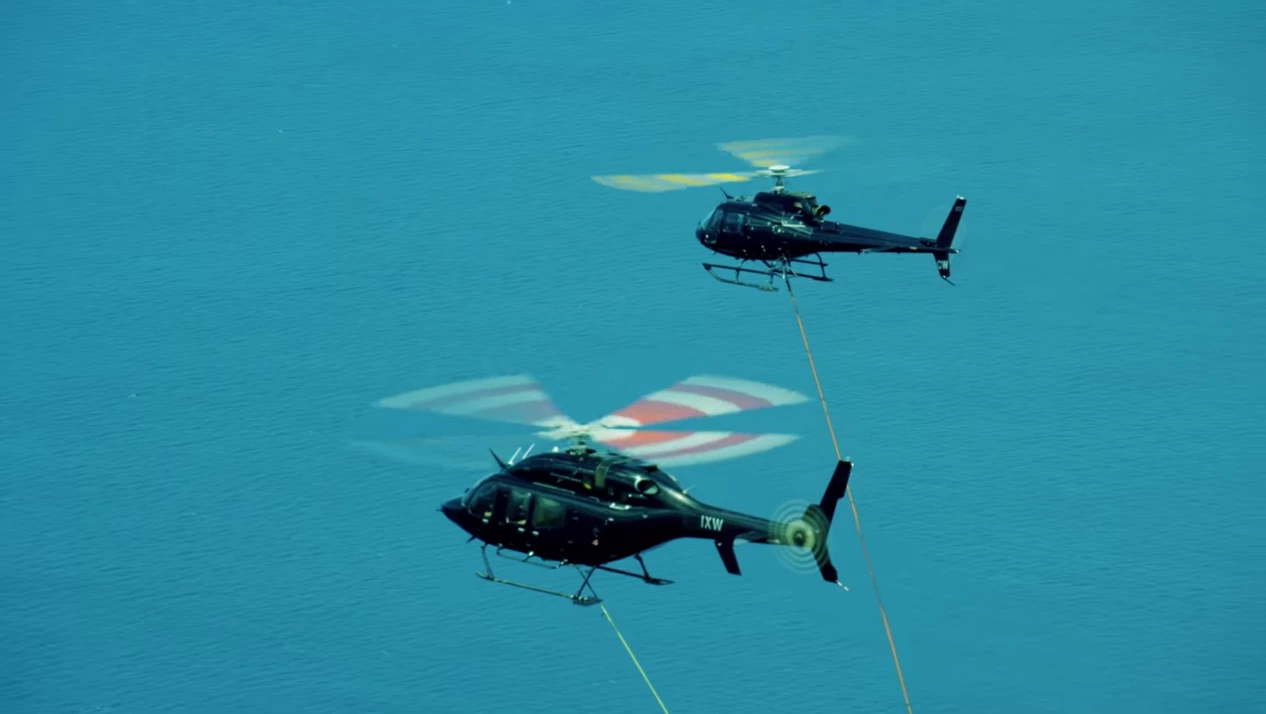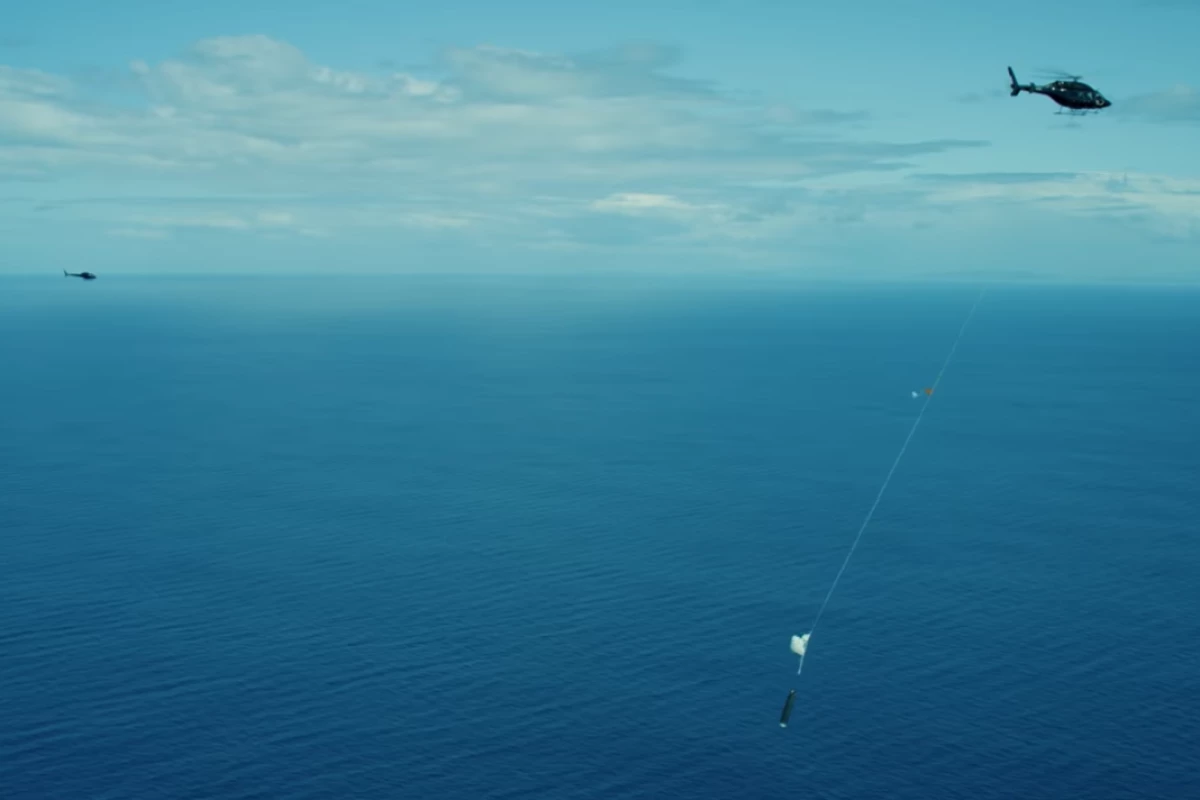Recovering rockets for re-use is becoming a key consideration for those in the private spaceflight game, with the likes of SpaceX and Blue Origin leading the charge. Rocket Lab is looking to join the party by collecting the first stage of its Electron launch vehicle in midair using a helicopter, a method that it has now successfully demonstrated over the open ocean in New Zealand.
Small satellite launch provider Rocket Lab first revealed its rocket recycling intentions in August last year, announcing plans to recover the Electron’s first stage from the ocean, as well as from mid-air. This would see the first-stage re-enter the atmosphere and deploy a parachute after delivering its payload into orbit to help reduce its velocity as it plummets towards the Earth. Then it can either make a soft landing on the ocean or a helicopter can come along and snatch it up in the air, by grabbing the line that connects it to the parachute with a specially designed grappling hook.
Rocket Lab put this helicopter-capture technique to the test in early March in New Zealand, which it notes was before the country entered Alert Level 4 lockdown of its COVID-19 response. The exercise saw the Electron first stage dummy hoisted up over the open ocean with a helicopter and then released, with the parachute then slowing its descent and a second helicopter coming along and successfully snaffling it from the air on its first attempt.

“Congratulations to the recovery team here at Rocket Lab on a flawless mid-air recovery test,” says Rocket Lab founder and chief executive, Peter Beck. “Electron has already unlocked access to space for small satellites, but every step closer to reusability is a step closer to even more frequent launch opportunities for our customers. We’re looking forward to pushing the technology even further this year and bringing a flown stage back to the factory.”
From here, Rocket Lab will now look to test out the other key plank of its recovery strategy later this year, where a first stage uses the parachute to perform a soft landing on the ocean. Once collected by ship, the first stage will then be carried off to Rocket Lab’s production facility in New Zealand for refurbishment.
You can check out a video of the helicopter capture test below.
Source: Rocket Lab




